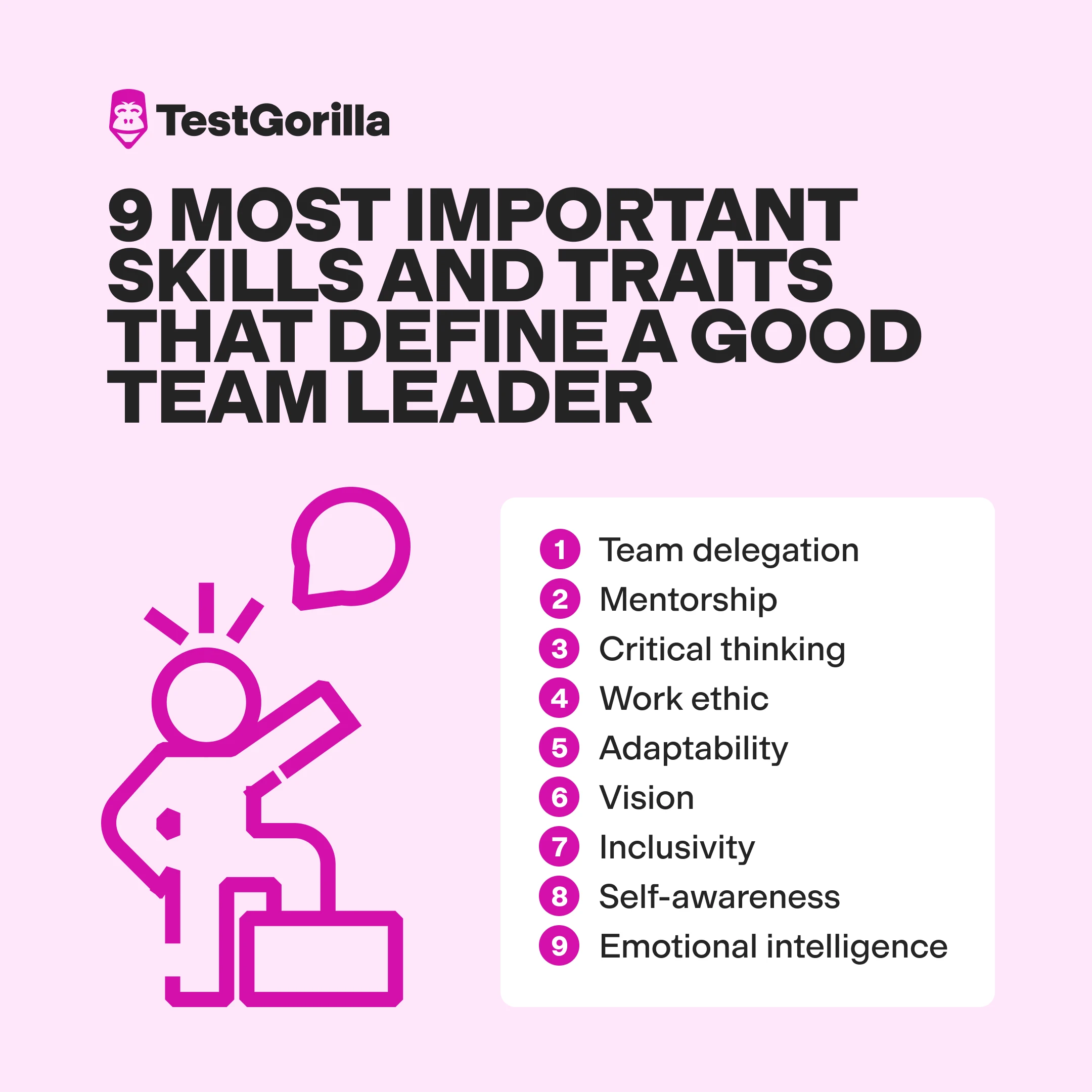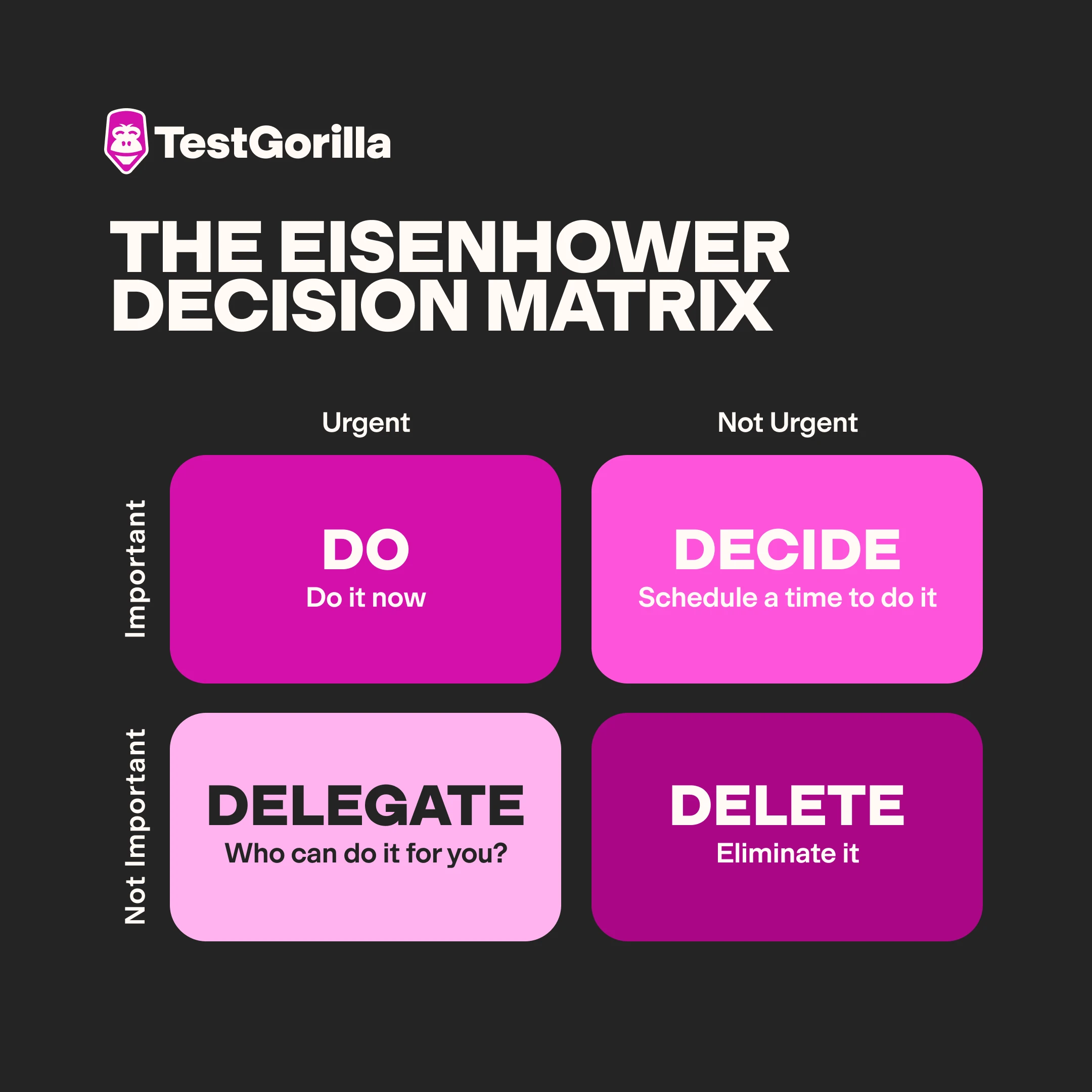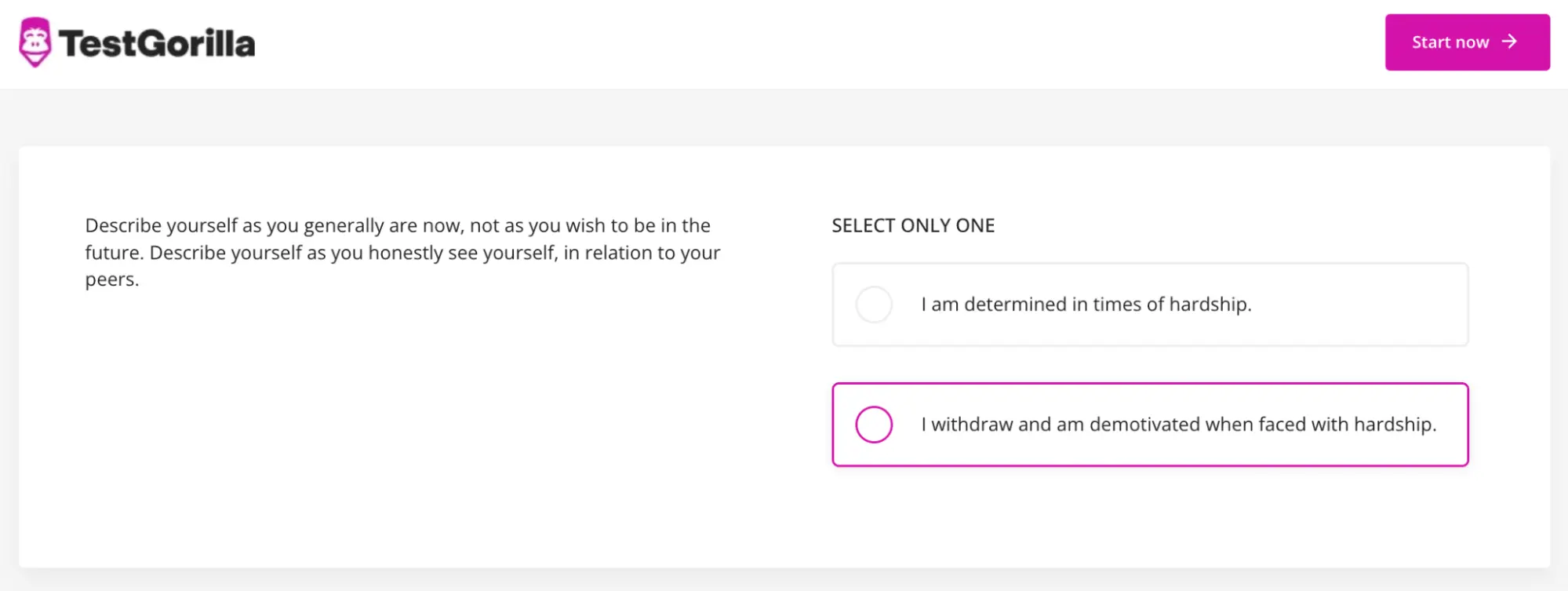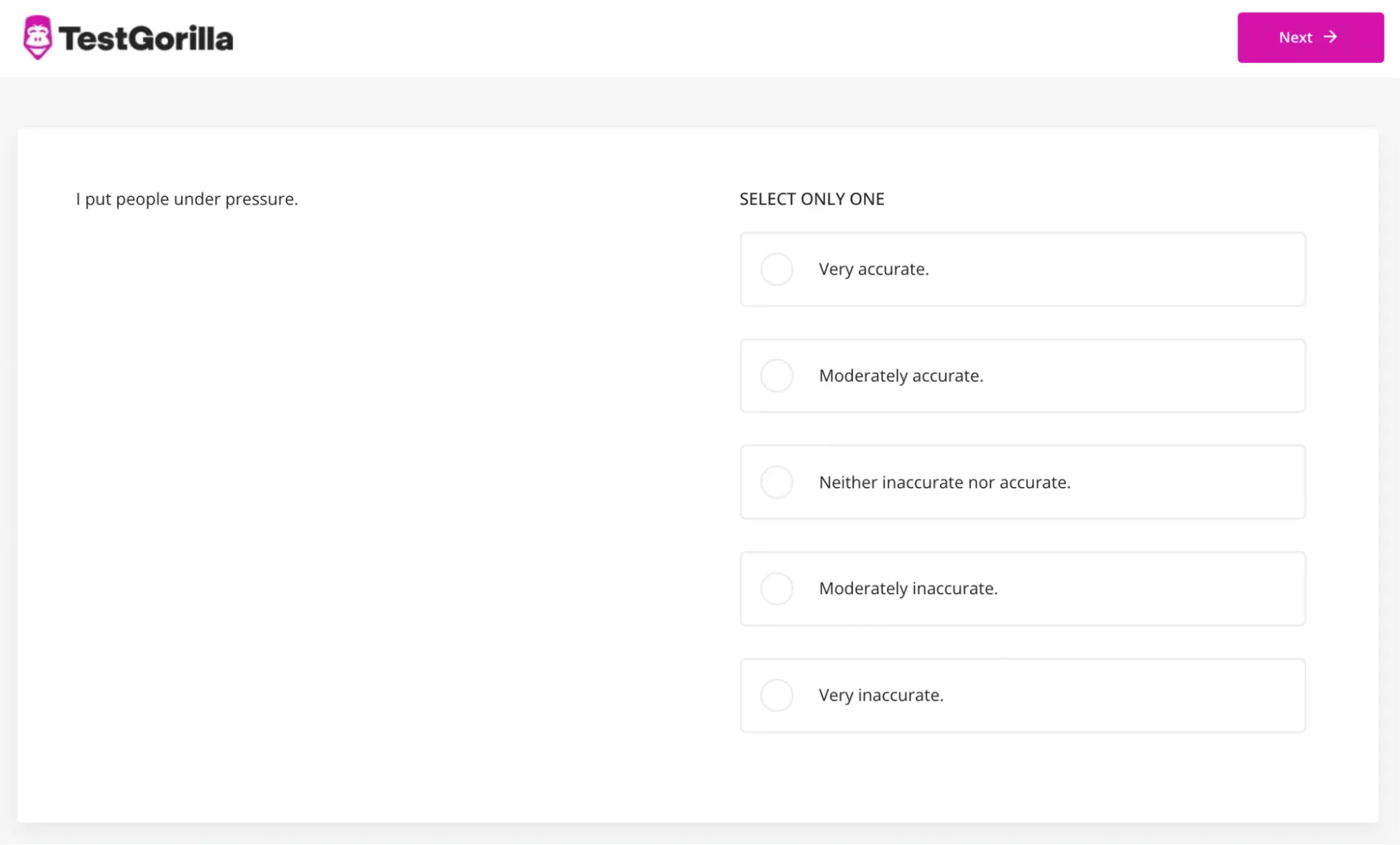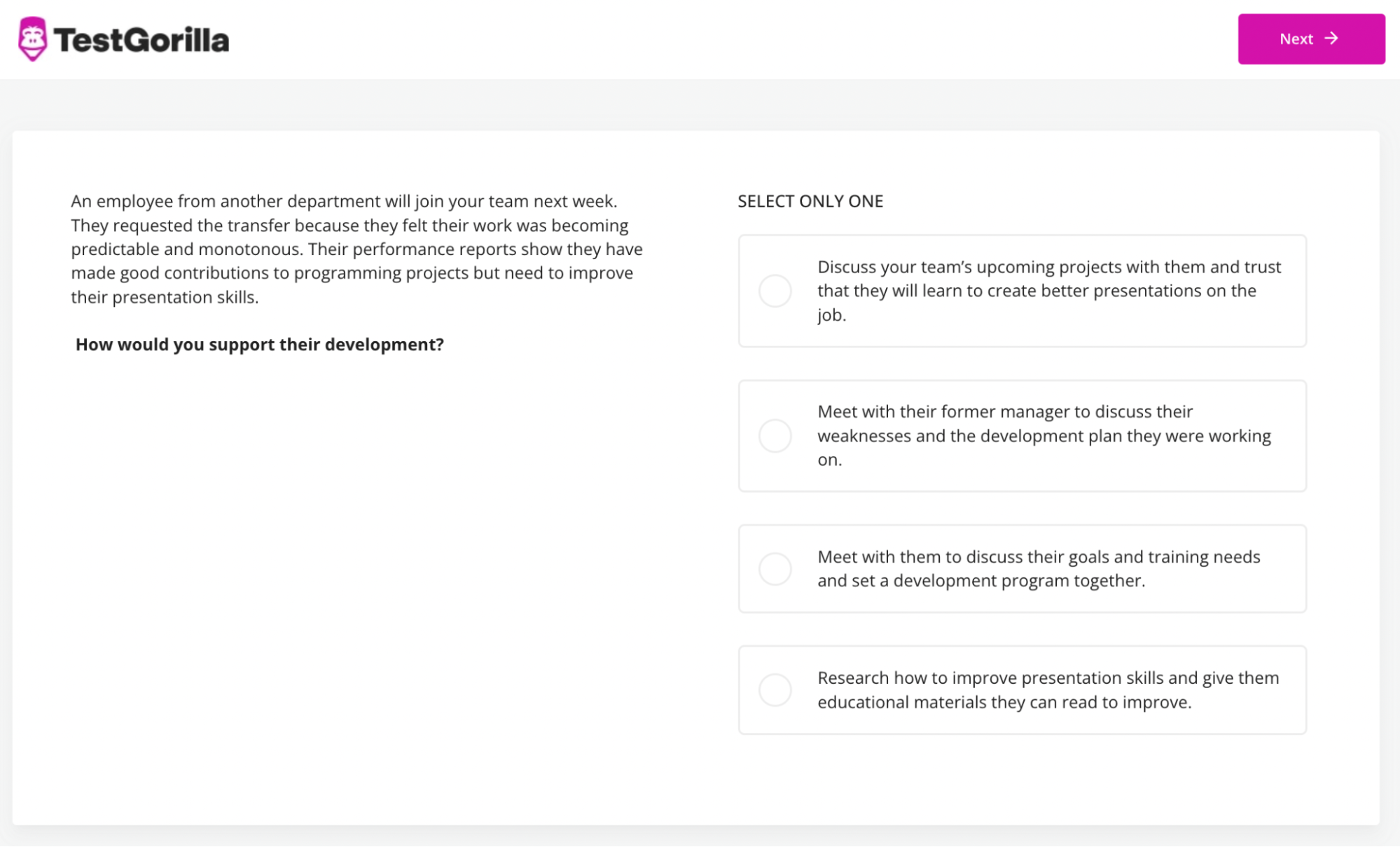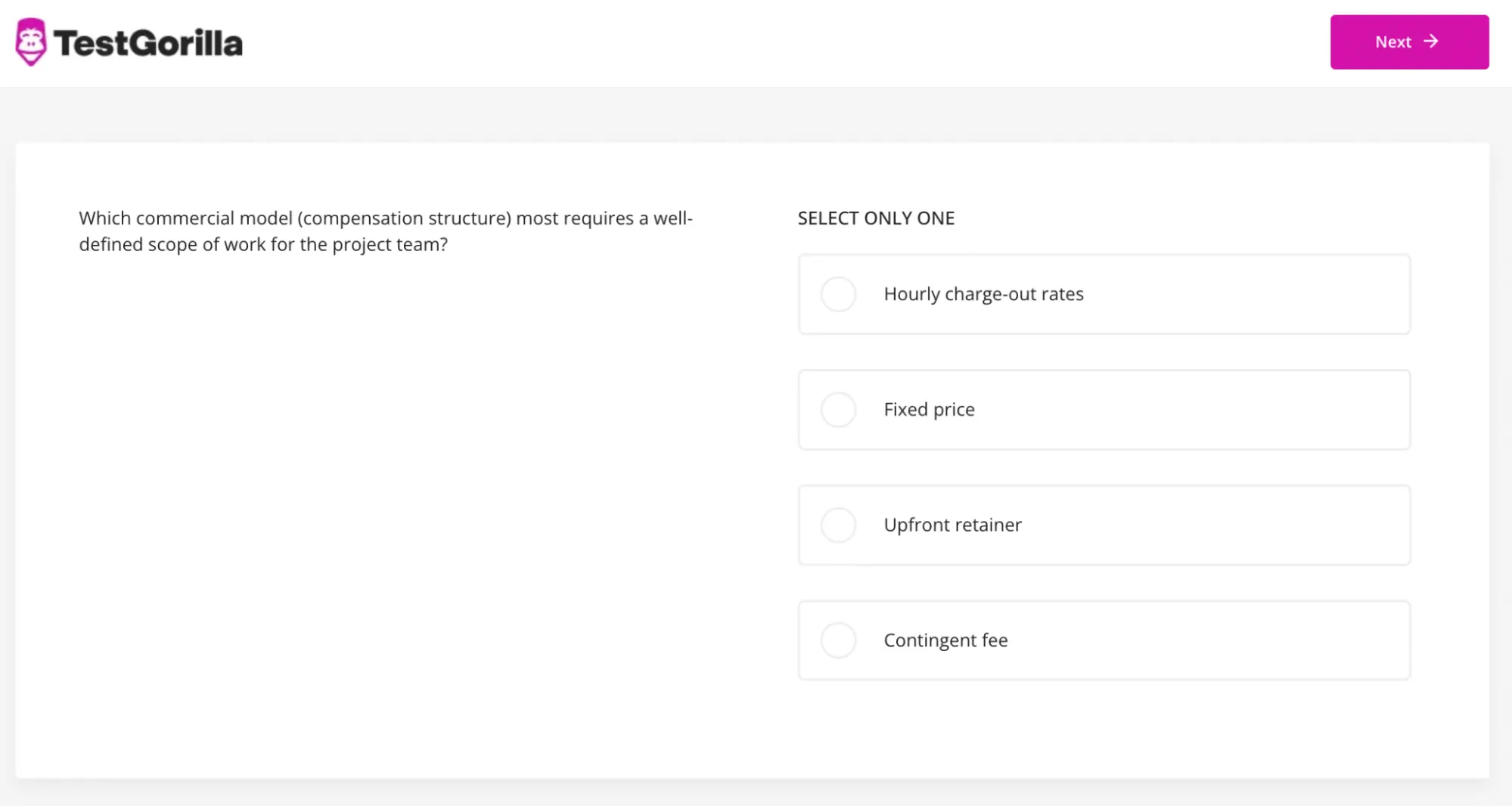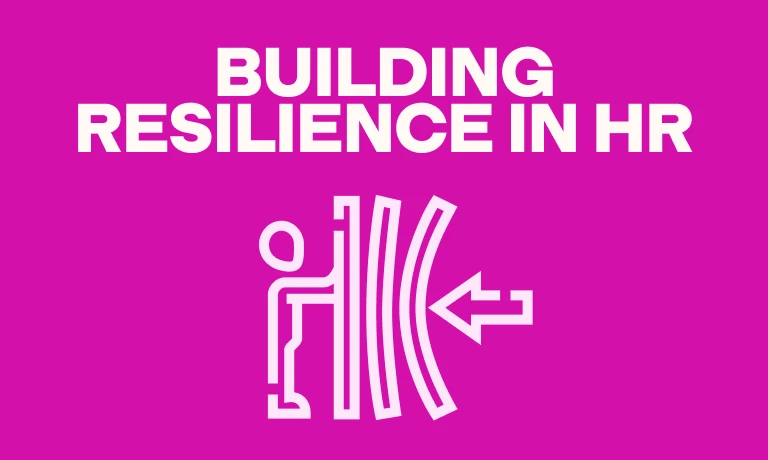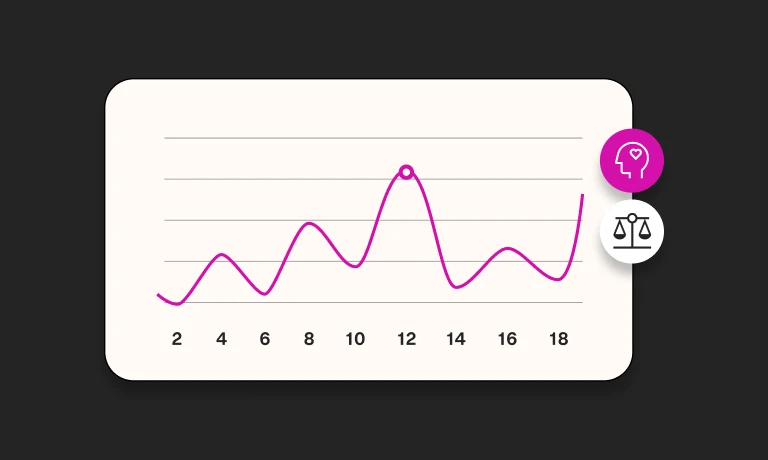Find team leaders who inspire employees and drive your company forward
The success of a firm is closely tied to its team leaders. A great team leader motivates through example, has a growth attitude, and enhances productivity and revenue. But how do you find a team leader with all these powerful leadership qualities?
You give candidates a team leader skills assessment.
Use this guide to discover the qualities of a good team leader your organization requires. Then, utilize the skills tests listed below, such as our Leadership & People Management test, to employ leaders who meet these criteria.
9 fundamental team leader skills and traits
According to Gallup’s research, 70% of variance in team engagement is determined by their leader. That’s how important it is to pick the right person for the job.
Although there is no set formula for what makes a successful leader, all the best company leaders have certain team lead skills in common.
We’ve compiled all the important skills of a good team leader below.
1. Team delegation
Good team delegation keeps the project running and builds employee confidence and productivity.
As employees become comfortable taking on tasks that challenge them, their weaknesses can turn into strengths over time through professional development.
A team leader skilled at delegation knows:
What’s the most efficient order of business to ensure work gets done on time without overworking, underutilizing, or micromanaging anyone on the team
Which employees are the best fit for the job and how to supplement their deficiencies with the strengths of other team members and/or coaching
To build this skill, start small. Monitor how people are performing and where they’re getting stuck. Include them in the project-related responsibilities.
You can sort tasks by urgency and importance and pick which ones to delegate using the Eisenhower Matrix:
2. Mentorship
Team leaders need to know a fair bit about everybody else’s jobs. They’re also often the only team members with the full context of the work and why it matters for the business.
When there’s a skill gap that needs filling, good leaders can provide empowerment or point their team members to the right place to learn.
Learning opportunities significantly contribute to employee retention and team success, which is why they’re an integral part of a healthy workplace culture.
Employee guidance and nurturing are defining traits of coach-type leaders. This leadership style is effective at engaging one-on-one with subordinates who are limited by a lack of skills or feel stuck in their current role.
3. Critical thinking
At its core, being a leader means answering questions every step of the way – from project monitoring, anticipating risks, and problem-solving to taking ownership of decision-making.
This game isn’t easy. A leader who can think critically knows how to:
Analyze information presented to them objectively
Be realistic with their estimates and plans
Choose which tasks take priority and ensure work gets done in the right order
Be pragmatic in matters like problem-solving or crisis management
Act in the company’s best interests
Make decisions that benefit the entire team
Critical thinkers are reliable assets in any role, but they’re invaluable in leadership positions.
4. Work ethic
Nobody is motivated by a lazy leader. A team leader who only does the bare minimum or delegates all their work to their subordinates loses the team’s respect, negatively influencing group morale.
An effective team leader with a strong work ethic naturally does the opposite, leading by example and inspiring employees to care about their work.
To develop a good work ethic, you need to be honest and always honor your commitments. Do what you say you’ll do, give credit where credit is due, and learn about compliance and company procedures.
Over time, exercising your work ethic builds rapport with your colleagues, which proves you’re a reliable team leader.
5. Adaptability
Team leaders face challenges daily. Whether it’s a conflict between two disgruntled employees or a company emergency, they must improvise, adapt, and overcome these issues.
Leadership agility, mental toughness, and resilience are essential soft skills of a team leader whose job involves high-stress situations and adapting to unforeseen circumstances.
Employees feel more at ease with a leader they can rely on for solutions during tough times.
To improve your adaptability, learn about workplace resilience as a way to view challenges as opportunities.
6. Vision
A visionary leader sees the big picture and believes in the company's mission.
They understand their role and the importance of their work. They know how to take the initiative for the good of the company and inspire those around them to go the extra mile by making them understand the meaning of their work.
This is a good motivator, a collaboration incentive, and a contributing factor to employee work satisfaction.
Clear vision is an especially useful team leader trait when a major company change is afoot or you need to rally the team to help with big-picture problems.
7. Inclusivity
Inclusive leaders are culturally aware and capable of noticing personal biases, listening to different perspectives, building trust, and fully embracing diversity in the workplace.
In the real world, inclusivity doesn’t mean treating everyone the same. On the contrary, it means abandoning assumptions, practicing open communication, and learning about employees in their unique complexity.
For example, this can look like asking Muslim employees what they need during Ramadan and making schedule adjustments to support them.
Inclusive leaders know how to set up each team member for success.
8. Self-awareness
Self-aware leaders know how to reflect on their own emotions, actions, and interactions with employees through a neutral lens. They have the ability to look inward and evaluate the good, the bad, and the ugly.
Self-awareness is a key skill for team leaders because it shows they strive to grow and improve themselves. These people tend to lead better and inspire the same growth mindset in those who work with them.
An important subset of self-awareness is humility.
Humble leaders see past their own egos and truly prioritize common goals, even if it means admitting another team member has more expertise in a particular area and relinquishing some control.
Humility in leaders contributes to more effective collaboration, innovation, self-efficacy, a sense of purpose, and psychological safety at work.
This team leader trait is crucial for people who manage disparate workers or teams that work independently, such as freelancers or employees working from home.
9. Emotional intelligence
Emotional intelligence is the ability to understand and manage emotions positively.
It is a marker of effective leadership and a necessary skill in high-stress situations. It’s also a lot more practical than you might believe.
Here are two subskills of a team leader with high emotional intelligence:
Effective communication: Leadership communication encompasses how leaders approach their employees, handle disputes, and encourage better work. Leaders who communicate effectively know how to speak directly with kindness and understanding and practice active listening.
Empathy: Around 70% of employees and HR professionals believe empathetic employers increase employee motivation. Empathetic leaders appreciate employees as people, not just as workers.
How to assess team leader skills and traits: 7 assessments
The secret to hiring a great candidate is finding those with the team leader qualities mentioned above.
Skill and trait tests are an accurate and reliable method for achieving this. These tests provide an overview of the candidates’ personalities, strengths, and weaknesses.
Start using talent assessment to find team leaders today
Turn to skills-based hiring to find your next leader as well as improve hire quality, reduce costs, and eliminate unconscious bias.
Ready to try skills-based hiring? Here are seven of our favorite team leader skills assessments.
1. Enneagram test
This test is best for establishing the candidate’s core beliefs.
The Enneagram test is a famous personality test developed by Oscar Ichazo and Claudio Naranjo. The model pinpoints the candidate’s core beliefs and worldview on a nine-pointed diagram and shows the connection between the different aspects of their personality.
Based on the Enneagram model, the nine types of team leaders are as follows:
Type One – Improver: This type has a strong sense of right and wrong and works hard to maintain high standards.
Type Two – Giver: The Giver values harmony, teamwork, and satisfying interpersonal relationship building above all else.
Type Three – Go-getter: Known as the success-oriented type, the Go-getter is pragmatic, ambitious, and status-conscious.
Type Four – Contemplator: The Contemplator is reserved and creative. However, their most significant strengths as leaders are their self-awareness and emotional intelligence.
Type Five – Pioneer: The Pioneer is who you go to for creative problem-solving. They’re insightful and curious innovators who thrive on building their knowledge and brainstorming how to solve complex puzzles.
Type Six – Devoted: The Devoted is a dependable, strong team player. They thrive in secure environments and are known for being hard-working, trustworthy, pragmatic, and reliable.
Type Seven – Cheerleader: The Cheerleader is chatty, upbeat, and optimistic. They bring a positive attitude and focus on creating practical and fun solutions to complex problems.
Type Eight – Master: The Master is always up to challenge the status quo and established beliefs. They’re confident, ambitious, and decisive. As leaders, they’re resourceful, goal-oriented, and honest.
Type Nine – Agreeable: Easygoing to a fault, the Agreeable provides a stable and calming presence in the office. As leaders, they’re creative, trusting, and supportive.
The Enneagram test is an effective solution if you already know the leadership style your team needs. This test also gives you a good feel for how your candidate leads a team.
If you’d like a similar evaluation but with more general information included, try the 16 Personalities test. It covers how candidates process information and operate as decision-makers, their natural tendencies, and even their lifestyle preferences.
2. DISC test
This test is best for establishing how candidates express emotions.
The DISC assessment is a great way to see how candidates treat their subordinates, especially in high-stress situations. It also explains how they communicate and collaborate with employees, other team leaders, and management.
The model has four main categories: dominance, influence, steadiness, and conscientiousness. It’s possible to fall neatly into one type – for example, a candidate might be decidedly more people-oriented than task-oriented – but most people are a combination of two or more categories.
The defining traits are as follows:
Dominance: D people are goal-oriented, bold, and confident. They value achieving set goals above all else and are determined to deliver results.
Influence: I people value relationships and harmony in the workplace. They influence and persuade others instead of using force.
Steadiness: S people are stable and reliable. They value cooperation and harmony in the workplace.
Conscientiousness: C people are also goal oriented like D but include a touch of accuracy and perfection. They value competency in themselves and others.
3. Leadership & People Management test
This test is best for establishing how candidates influence and guide subordinates.
We developed the Leadership & People Management test to evaluate essential team leadership skills based on Blanchard and Hersey's situational leadership theory.
Candidates are asked questions and given a choice to tell, sell, delegate, or participate in the test scenarios.
This team leader test evaluates how the candidate deals with the following:
Task delegation, responsibility, and management
Feedback and feedback timeframes
Employee guidance
Plans to develop employees
Steps to support employees
Gaining acceptance for plans and project ideas
The evaluation reveals the candidates who are interested in influencing and supporting employees. It also shows you how they play to employees’ strengths.
Here’s a scenario example candidates would navigate in this test:
Side note: TestGorilla also has a separate Communication test you can include in your assessment that covers the key communication skills from this test.
Get started with our Communication test for free
Use our collection of five free talent assessments to implement skills-based hiring today and see the results for yourself.
4. Project Management test
This test is best for establishing how well candidates manage projects.
A team leader or project manager must allocate company resources, deliver high-quality work, manage other team members, and stay within the project deadline. If they buckle under the stress, this could affect profit margins and morale.
The Project Management test establishes whether the candidate knows how to handle situations like these:
Do they have the time management skills to define, manage, and deliver the work in the client’s timeframe?
Can they estimate and manage project schedules and budgets?
Can they effectively communicate with other project participants and perform conflict resolution within the group or with the client?
The test uses real-life scenarios with project requirements and outcomes to test their abilities:
Those who do well have an excellent grasp of project cycles. They also know how to deliver high-quality work that satisfies the client’s needs.
5. Critical Thinking test
This test is best for evaluating the candidate’s analytical abilities.
We define critical thinking as the ability to conceptualize, gather, and analyze information to make the best and most informed choice. It’s the key to innovation and problem-solving.
The Critical Thinking test evaluates the candidate with inductive and deductive reasoning problems.
The evaluation determines how they:
Interpret sequences and arrangements
Analyze cause and effect
Recognize assumptions
Make decisions based on the given and gathered information
The results show whether candidates have sound judgment when making decisions that could affect other team members, the company’s reputation, and resources.
6. Motivation test
This test is best for assessing if the organization’s and candidate’s expectations align.
Forbes estimates that the average cost of replacing a highly competent employee is 213% of their annual income. Understanding employees' motivations is crucial to eliminating employee churn, especially when hiring a team leader to model your company values.
We based the Motivation test on Oldham and Hackman’s Job Characteristics Model. It helps you find candidates who align with the company’s expectations.
How does it work? As the employer, you customize the test to your needs and set benchmarks for the candidates. Candidates’ results are then compared for alignment with your business to find the best match.
7. Business Ethics & Compliance test
This test is best for assessing the candidate’s ethics.
The team leader holds a position of power in your organization. You can use the Business Ethics & Compliance test to ensure they handle that power responsibly and make ethical choices.
The test checks if they:
Know the effect of ethical issues on the business and one’s personal reputation
Understand company policy and legal violations
Are aware of and avoid conflicts of interest
Adhere to anti-harassment policies
Comply with anti-discrimination policies
By getting a feel for candidates’ attitudes toward rules and ethical dilemmas, you can find a leader who protects your business.
The best insights on HR and recruitment, delivered to your inbox.
Biweekly updates. No spam. Unsubscribe any time.
How to develop team leader skills
Nurturing your talent is a smarter investment for your business than always looking externally for a perfect new person to hire.
Perhaps you have (or are) a budding team leader who needs a bit of help growing into the leadership role. Here are the steps to build a good team leader skill set within the company:
Decide what leadership type you need to achieve your goals and focus on that type’s defining team leader traits
Perform a skills gap analysis to identify weak points
Provide skill learning opportunities to strengthen weaknesses and gain new skills
To cement the team leader skills requirements and ensure they’re met, tie them into recognition and promotion metrics.
It helps give them weight and automatically guides future leaders (and everyone else) to champion them.
For example, do you want proactive and empathetic leaders? Praise and reward behaviors that reflect these values to set clear expectations and naturally shape emerging leaders.
Assess and hire the best team leaders with TestGorilla
Once you know what team leader skills and traits are an advantage to your company, finding candidates that possess them becomes much faster and easier.
You can evaluate team leader qualities within a talent assessment made up of five tests.
Ready to hire your next best leader?
Sign up for a demo with one of our friendly experts to see how TestGorilla works, or get started immediately by grabbing your Free Forever plan.
Then, once your pipeline is full of quality candidates, read about team leader interview questions to use in the next stage of your hiring process.
Team leader skills FAQs
Below is a quick refresher about the attributes and qualities of a team leader.
Why are team leader skills important?
Great leaders model your company values from a position of authority and contribute to a positive work environment. By increasing employee engagement, they can raise the company’s productivity and profitability and reduce absenteeism and turnover.
What are the 3 important roles of a team leader?
Organizing work: Breaking down the goal into a realistic schedule and balancing employee workloads as needed to ensure the project is moving in the right direction
Communicating with team members: Making sure that everyone understands and is accountable for their duties, showing appreciation for good work, and taking steps to avoid employee burnout are key to successful team management
Rallying workers under a common team goal: Conveying the greater meaning behind the work and inspiring proactive collaboration between teammates
Is a team leader the same as a manager?
Managers are team leaders, but a team leader can be anyone overseeing a project or team regardless of their official role title. A specific project could have both a manager and a team leader on board. For example, the manager could be more in charge of the high-level processes, schedules, and external stakeholder communication while the team leader focuses on supporting and coaching team members.
Related posts
You've scrolled this far
Why not try TestGorilla for free, and see what happens when you put skills first.



